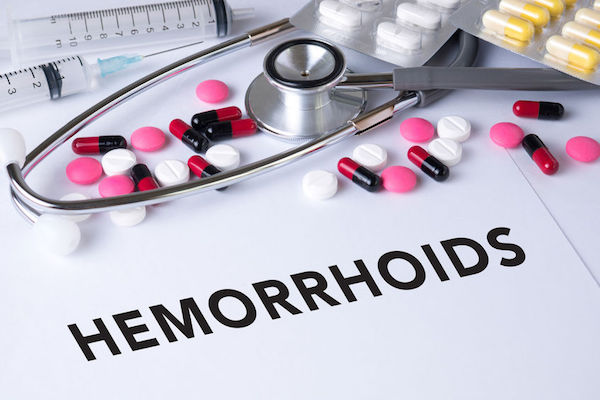Haemorrhoids are common, and more than 50 percent of people will reportedly have them by the age of 50. They present both internally and/or externally, swelling near the anus opening.

Haemorrhoids develop from an increase in pressure in the veins in the lower rectum. Common causes of this pressure are:
- Constipation and straining
- Diarrhoea
- Standing for a very long time
- Obesity
- A poor diet
- Pregnancy and childbirth. Haemorrhoids in pregnancy are common. The pressure of the foetus on the pelvis and hormonal changes can cause the haemorrhoidal tissue in the anus to enlarge. It is common before labour too.
- A family history
What are its symptoms?
The most common symptom is blood on the stool, toilet paper or in the toilet bowl. Symptoms usually go away within a few days, but haemorrhoids can recur, most likely in people who have experienced symptoms in the past.
Other common haemorrhoids symptoms include:
- Soreness and swelling around the anus
- An unusual mound on the anus
- Pain and irritation after going to the toilet
- A slimly emission from the anus
Although uncomfortable, haemorrhoids are not usually painful unless they become strangulated.
How is it diagnosed?
Haemorrhoids can be difficult to diagnose as many ano-rectal problems (fissures, abscesses, irritation) have similar symptoms.
If you have persistent symptoms and suspect you may have haemorrhoids, consult your doctor. Diagnostic tools include:
- A rectal examination: Your doctor will examine the outside of your anus to see if you have visible haemorrhoids. He/she may also conduct an internal exam – a digital rectal examination (DRE).
- Proctoscopy: A proctoscope – a thin hollow tube with a light on the end – is inserted into your anus. This allows your doctor to see your entire anal canal. A tissue sample may be taken for testing.
Once haemorrhoids have been identified, they are usually classified by their type and severity. This will help doctors recommend suitable treatment. Haemorrhoids stages range from first to fourth degree, and become more severe as they progress.
What are your treatment options?
Haemorrhoids are easily treatable if detected early. They may go away by themselves but will usually reappear in a more acute form.
Treatment options include over-the-counter medicines, creams and ointments, minimally invasive procedures and surgery.
Studies have shown over-the-counter medicines can often only offer temporary pain relief. Creams and ointments are effective and cure haemorrhoids. They can, however, be messy and painful to apply.
Minimally invasive procedures, include:
- Rubber band ligation: One or two tiny rubber bands are placed around the base of an internal haemorrhoid to cut off its circulation. It will fall off within a week.
- Injection (sclerotherapy): A chemical solution is injected into the haemorrhoid tissue to shrink it.
- Coagulation (infrared, laser or bipolar): Coagulation techniques use laser or infrared light or heat to cause small, bleeding, internal haemorrhoids to harden and shrivel.
In some cases, surgery is recommended. This includes removal or stapling, which blocks blood flow to haemorrhoidal tissue.
Can it be prevented?
There are precautions you can follow to prevent haemorrhoids.
Avoid constipation by:
- Eating a diet high in fibre such as fruits, vegetables, beans and whole grains
- Drink plenty of fluids
- Exercise regularly
- Take a fibre supplement.
Practise healthy bowel habits by:
- Going to the bathroom as soon as you feel the urge
- Avoiding straining
- Avoiding holding your breath while holding stools
- Avoiding long periods of sitting.
IMAGE CREDIT: 123rf.com
